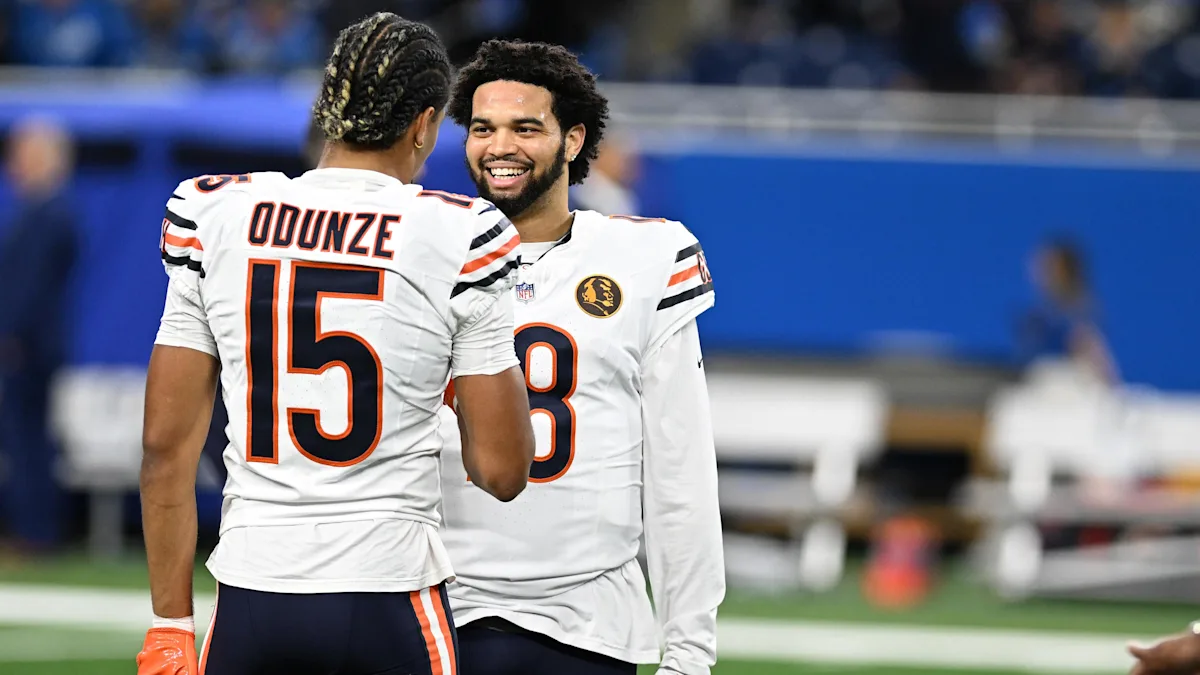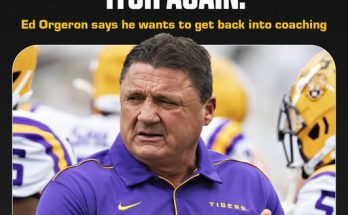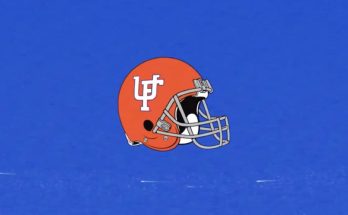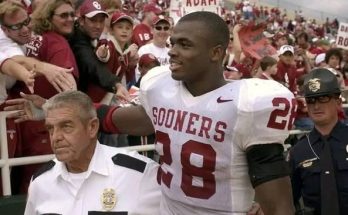After just one season, the Chicago Bears’ 2024 rookie class receives a disappointing ranking.
The Chicago Bears’ 2024 rookie class has been met with significant disappointment following just one season, with many analysts and fans alike questioning the overall impact and potential of the new additions. While every team’s rookie class is met with varying expectations, the Bears’ struggles have placed a glaring spotlight on their draft decisions and how well those selections have panned out. Let’s dive into the various aspects of the Bears’ 2024 rookie class to understand the reasons behind this early underperformance and the possible outlook moving forward.
The 2024 Draft Overview
The Chicago Bears entered the 2024 NFL Draft with a sense of urgency. Coming off a 2023 season where they failed to contend in the NFC North, the Bears needed to address key weaknesses, especially on the offensive and defensive lines, and in the secondary. GM Ryan Poles had significant draft capital, including the number 1 overall pick, which allowed the Bears to target top-tier talent in a variety of positions.
Many hoped the Bears’ rookie class would serve as the foundation of a promising future. The team used their top picks to address some of their most glaring needs, hoping that immediate contributions would be on the horizon. However, after one season, it’s fair to say that the results have fallen short.
The Most Notable Picks and Their Struggles
1. Quarterback – Caleb Williams (USC)
Arguably the most high-profile pick in the 2024 NFL Draft was the Chicago Bears’ selection of Caleb Williams with the first overall pick. Williams, one of the most hyped quarterbacks in college football history, had an exceptional college career at USC, where he showcased the ability to make every throw and exhibit impressive poise in the pocket.
Expectations were sky-high for Williams to become the face of the franchise. However, his first season in the NFL has been far from stellar. The transition from college to the pros proved more difficult than anticipated, with Williams struggling to adjust to the speed and complexity of NFL defenses. His completion percentage was below expectations, hovering in the mid-50s, with numerous turnovers throughout the season.
One of the biggest issues that Williams encountered was his inability to handle pressure, often resulting in inaccurate throws or sacks when the offensive line faltered. While there were flashes of brilliance, particularly in games where the Bears played from behind and Williams had to air the ball out, he was inconsistent overall. Bears fans and analysts expected Williams to make an immediate impact, but instead, they witnessed the growing pains that often come with developing a young quarterback.
2. Wide Receiver – Marvin Harrison Jr. (Ohio State)
Another big name in the 2024 draft was Marvin Harrison Jr., a wide receiver from Ohio State who was regarded as one of the best talents in his class. The Bears desperately needed to add playmaking talent to their receiving corps, and Harrison was seen as the perfect fit. However, his rookie campaign has been a disappointment, despite showing flashes of his potential.
Throughout the season, Harrison battled with drops and a lack of chemistry with quarterback Caleb Williams. While the Bears’ offensive line also struggled to provide the necessary time for Williams to find his top target, Harrison’s lack of separation from defenders and inability to make critical catches in key moments left much to be desired. As a high draft pick, Harrison’s struggles to make an immediate impact were one of the more glaring issues for the Bears’ offense.
3. Defensive End – Jared Verse (Florida State)
On the defensive side of the ball, the Bears selected Jared Verse, a pass-rushing specialist from Florida State, hoping he could be the key to improving their woeful defensive line. In college, Verse was a disruptive force, earning numerous accolades for his ability to get after the quarterback. However, his transition to the NFL has been less smooth.
Verse struggled with the speed and power of NFL offensive linemen, and his sack numbers were far below expectations. While his motor was always evident, the lack of a refined pass-rush technique was evident. He showed glimpses of his potential, but a lack of consistent pressure on opposing quarterbacks hindered the Bears’ ability to get off the field on third downs. This created a significant gap in the defense’s effectiveness, as opposing teams were able to maintain drives and control the game.
4. Cornerback – Kool-Aid McKinstry (Alabama)
The Bears also made an effort to shore up their secondary by selecting cornerback Kool-Aid McKinstry out of Alabama. McKinstry was considered one of the top cornerback prospects in the draft, with excellent coverage skills and a reputation for being able to shut down top-tier wide receivers.
However, McKinstry’s first season in the NFL was marred by inconsistency. He struggled with penalties and found it difficult to adjust to the speed of NFL receivers. His coverage wasn’t as tight as anticipated, and he was often caught out of position on big plays. His lack of experience in high-pressure situations showed, and while he demonstrated potential, he wasn’t able to make the game-changing plays that the Bears needed from him.
The Offensive Line Dilemma
One of the biggest underlying issues with the Bears’ 2024 rookie class is the continued struggle of the offensive line. Many of the rookie offensive players, including Caleb Williams and Marvin Harrison Jr., found it difficult to perform due to the lack of protection from the line. The Bears’ offensive line was one of the worst in the league in 2024, making it difficult for their young quarterback to develop and their star receiver to get open.
This was particularly problematic for a rookie class that included skill-position players like Williams and Harrison, who rely heavily on solid blocking to execute their game plans. The Bears’ inability to address the offensive line issue through the draft or free agency has exacerbated the struggles of their rookie class, hindering their ability to shine in their first season.
The Coaching Factor
While the players themselves have certainly played a role in the underwhelming results, the Bears’ coaching staff must also bear some responsibility for the disappointment of the rookie class. The coaching staff, led by head coach Matt Eberflus, seemed to struggle in developing young talent, particularly in terms of helping rookies transition into their roles. This was especially apparent with players like Caleb Williams, whose confidence appeared to dip over the course of the season.
Coaching staff must also take a hard look at their offensive and defensive schemes to understand whether they are setting their players up for success. If the coaching staff is not adapting to the strengths of the rookie class, it will be difficult for these players to contribute meaningfully, especially in their first year when they are still adjusting to the NFL game.
The Bigger Picture: Bears’ Long-Term Prospects
Despite the disappointing start for the 2024 rookie class, it’s important to take a step back and look at the bigger picture. The Bears are still in the early stages of a rebuilding phase, and one disappointing season does not necessarily define the future of the franchise. The struggles of their rookie class should serve as a valuable learning experience for both the players and the coaching staff.
The development of players like Caleb Williams and Marvin Harrison Jr. is still a work in progress. It’s not uncommon for top draft picks to struggle during their rookie seasons, particularly when surrounded by an underperforming team. With time, and assuming the coaching staff is able to better develop these young talents, the Bears may see a resurgence in the years to come.
Furthermore, the Bears’ struggles could also provide an opportunity to reassess their approach to the draft and free agency. The 2024 class may not have provided immediate results, but the Bears could use their high draft picks in future years to address the gaps in their roster, particularly along the offensive and defensive lines. With additional reinforcements, the team’s rookies may be able to thrive in future seasons.
In conclusion, the Chicago Bears’ 2024 rookie class has faced significant challenges during its first season in the NFL. While many of the individual players have shown flashes of potential, the overall lack of production has been a source of frustration for the organization and its fanbase. Issues like an ineffective offensive line, poor coaching, and the typical learning curve of rookies have all played a role in the underperformance of the class.
That said, it’s important to recognize that one season is not the end of the road for this group of players. The NFL is a league that demands patience, especially when it comes to rookie development. With adjustments in coaching, better team chemistry, and a more effective supporting cast, the Bears’ 2024 rookie class could still fulfill its potential. Only time will tell whether this group can grow into the foundation of a successful Bears team in the coming years.



